LEA 5- CHARACTER FORMATION 1: NATIONALISM AND PATRIOTISM
1/54
There's no tags or description
Looks like no tags are added yet.
Name | Mastery | Learn | Test | Matching | Spaced |
|---|
No study sessions yet.
55 Terms
RA 8491
Flag and Heraldic Code of the Philippines
Festoon
To hang in a curved shape between two points as a decoration.
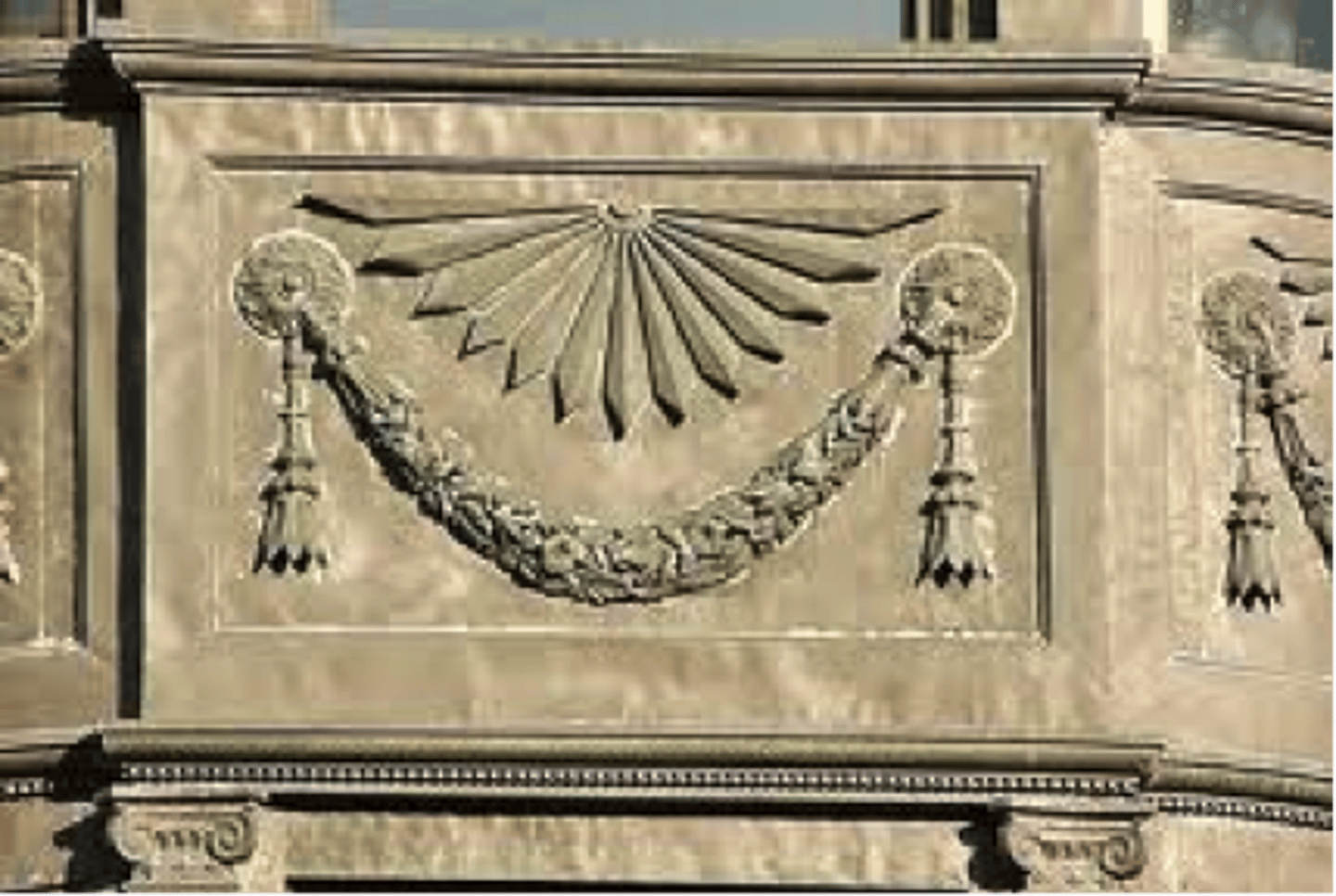
Fly
The part of the flag outside the hoist or length.
Half-Mast
Lowering the flag to one-half the distance between the top and bottom of the staff.
Hoist
Part of the flag nearest the staff or the canvass to which the halyard is attached.
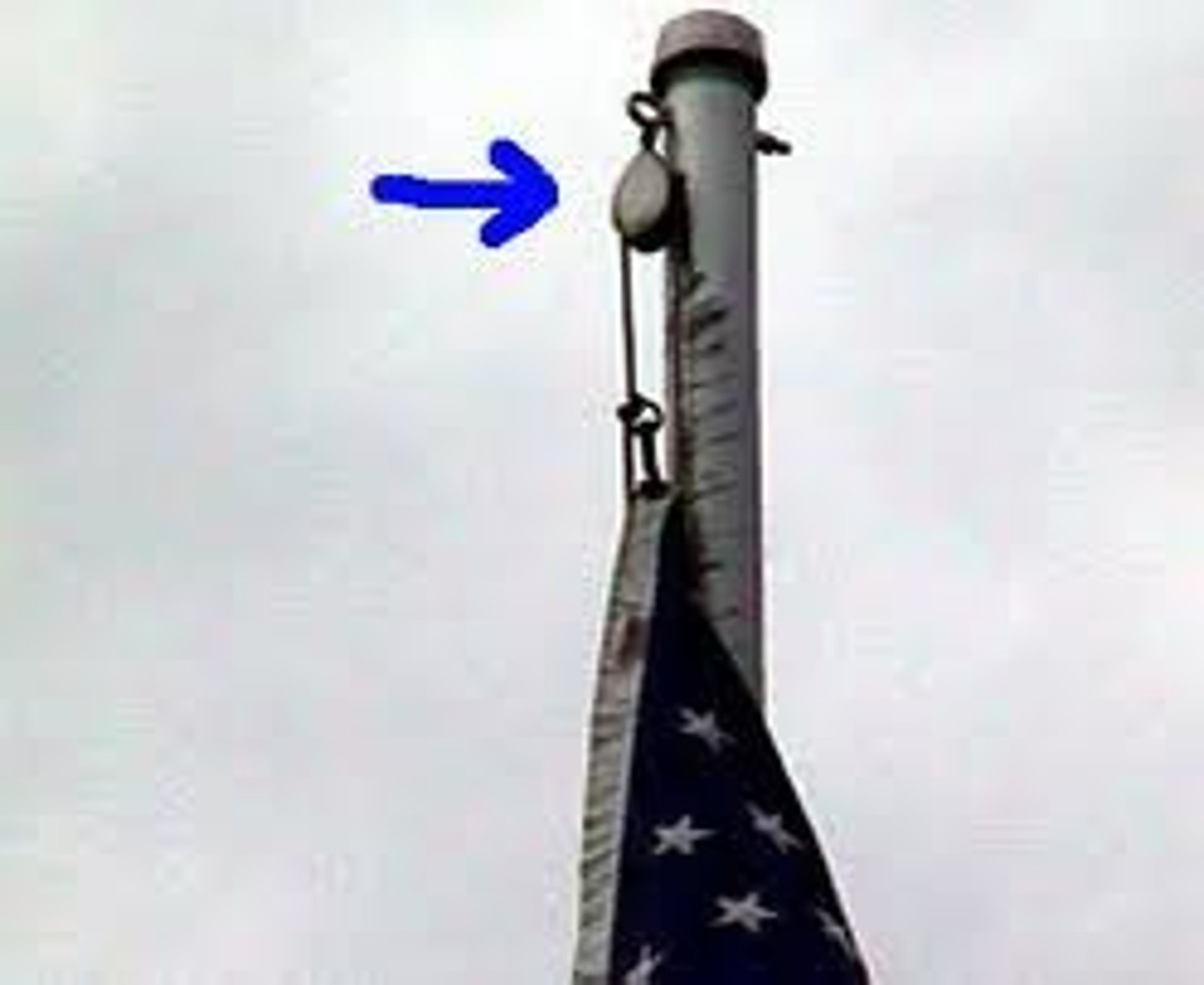
Places of Frivolity
Places of hilarity marked by or providing boisterous merriment or recreation.
Institute
National Historical Institute
Design of the National Flag
The flag of the Philippines shall be blue, white and red with an eight-rayed golden-yellow sun and three five-pointed stars
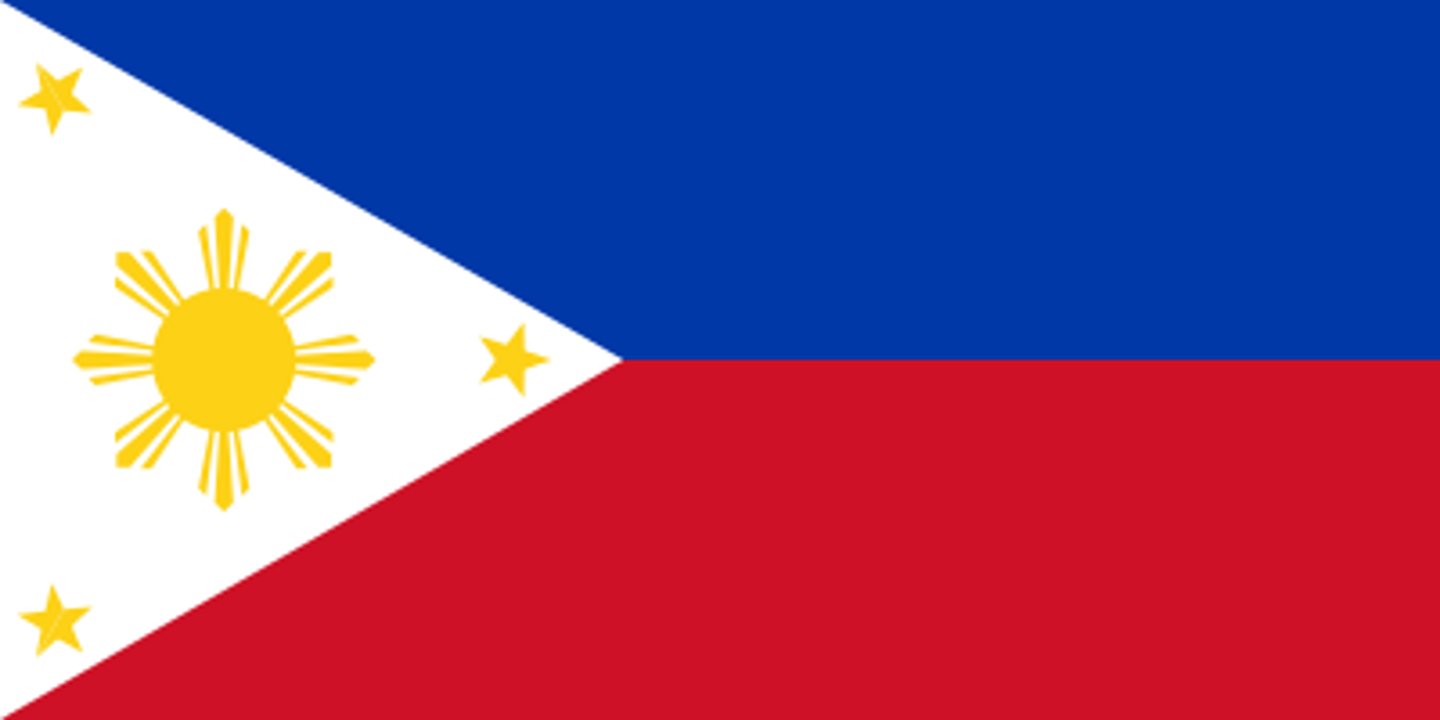
Hoisting and Display of the National Flag
The flag shall be displayed in all public buildings, official residences, public plazas, and institutions of learning every day throughout the year.
The flag shall be permanently hoisted, day and night throughout the year, in front of the following:
1. Malacañang Palace
2. Congress of the Philippines building
3. Supreme Court building
4. Rizal Monument in Luneta
5. Aguinaldo Shrine in Kawit
6. Barasoain Shrine in Malolos
7. Tomb of the Unknown Soldier
8. Libingan ng mga Bayani
9. Musoleo de los Beteranos dela Revolucion
10. All International Ports of Entry
Flag shall be flown on merchant ships of Philippine registry
More than one thousand (1000) gross tons and on all naval vessels.
Proper Display of the Philippine Flag (IF FLOWN)
In time of peace- Blue field on top
In times or war- Red field on top
Proper Display of the Philippine Flag (HANGING POSITION)
In times of peace- Blue field shall be to the right (left of the observer)
In times of war- Red field to the right (left of the observer)
Philippine Flag Flown with a National Flag
1. Must be flown on separate staffs.
2. Same height and shall be of equal size.
3. The Philippine flag shall be hoisted first and lowered last.
Philippine Flag Flown with not a National Flag
It may be flown in the same lineyard as the Philippine flag but below the latter and it cannot be of greater size than the Philippine flag.
Display of the Philippine Flag with another Flag
The Philippine flag shall be on the right (left of the observer) of the other flag.
Display of Philippine Flag in line of other Flags
The Philippine flag shall be in the middle of the line.
What to do when the Philippine Flag is worn-out?
A flag worn out through wear and tear, shall not be thrown away. It shall be solemnly burned to avoid misuse or desecration. The flag shall be replaced immediately when it begins to show signs of wear and tear.
Nota Bene
The flag shall not be raised when the weather is inclement. If already raised, the flag shall not be lowered.
Speed of hoisting the flag to the top
Briskly.
Speed of lowering the flag
Ceremoniously.
Conduct of Flag Raising Ceremony
All government offices and educational institutions shall henceforth observe the flag-raising ceremony every Monday morning and the flag lowering ceremony every Friday afternoon. The ceremony shall be simple and dignified and shall include the playing or singing of the Philippine National Anthem.
During the flag-raising ceremony
The assembly shall stand in formation facing the flag. At the moment the first note of the anthem is heard, everyone in the premises shall come to attention; moving vehicles shall stop. All persons present shall place their right palms over their chests, those with hats shall uncover; while those in military, scouting, security guard, and citizens military training uniforms shall give the salute prescribed by their regulations, which salute shall be completed upon the last note of the anthem.
During the flag lowering
The flag shall be lowered solemnly and slowly so that the flag shall be down the mast at the sound of the last note of the anthem. Those in the assembly shall observe the same deportment or shall observe the same behavior as for the flag-raising ceremony.
Half-Mast
The flag shall be flown at half-mast as a sign of mourning on all the buildings and places where it is displayed on the day of official announcement of the death.
President or Former President (Half-Mast)
10 days.
VP, Chief of Justice, Senate President, Speaker of HOR (Half-Mast)
7 days.
Other persons to be determined by the Institute (Half-Mast)
Less than 7 days.
Manner in hoisting the flag in Half-Mast
The flag when flown at half-mast shall be first hoisted to the peak for a moment then lowered to the half-mast position. The flag shall again be raised to the peak before it is lowered for the day.
Manner in using the flag to cover the casket
The flag shall be placed such that the white triangle shall be at the head and the blue portion shall cover the right side of the caskets. The flag shall not be lowered to the grave or allowed to touch the ground, but shall be folded solemnly and handed over to the heirs of the deceased.
Can you compel someone to do the pledge of Flag?
No, individuals whose faith or religious beliefs prohibit them from making such pledge must nonetheless show full respect when the pledge is being rendered by standing at attention.
Flag Days
May 28 to June 12 of each year is declared as Flag Days.
Proportions of the Philippine Flag
Width: 1 meter
Length: 2 meters
Sides of White Triangle: 1 meter
Prohibited Acts in Flag
1. To mutilate, deface, defile, or trample.
2. To dip the flag to any person or object by way of compliment or salute.
3. To wear the flag in whole or in part as a costume or uniform.
4. To add any word, figure, mark, picture, design, drawings, advertisement, or imprint of any nature on the flag.
5. To print, paint or attach representation of the flag on handkerchiefs, napkins, cushions, and other articles of merchandise.
6. To print, paint or attach representation of the flag on handkerchiefs, napkins, cushions, and other articles of merchandise.
7. To print, paint or attach representation of the flag on handkerchiefs, napkins, cushions, and other articles of merchandise.
8. To display the flag in front of buildings or offices occupied by aliens.
Who composed the Lupang Hinirang?
Julian Felipe.
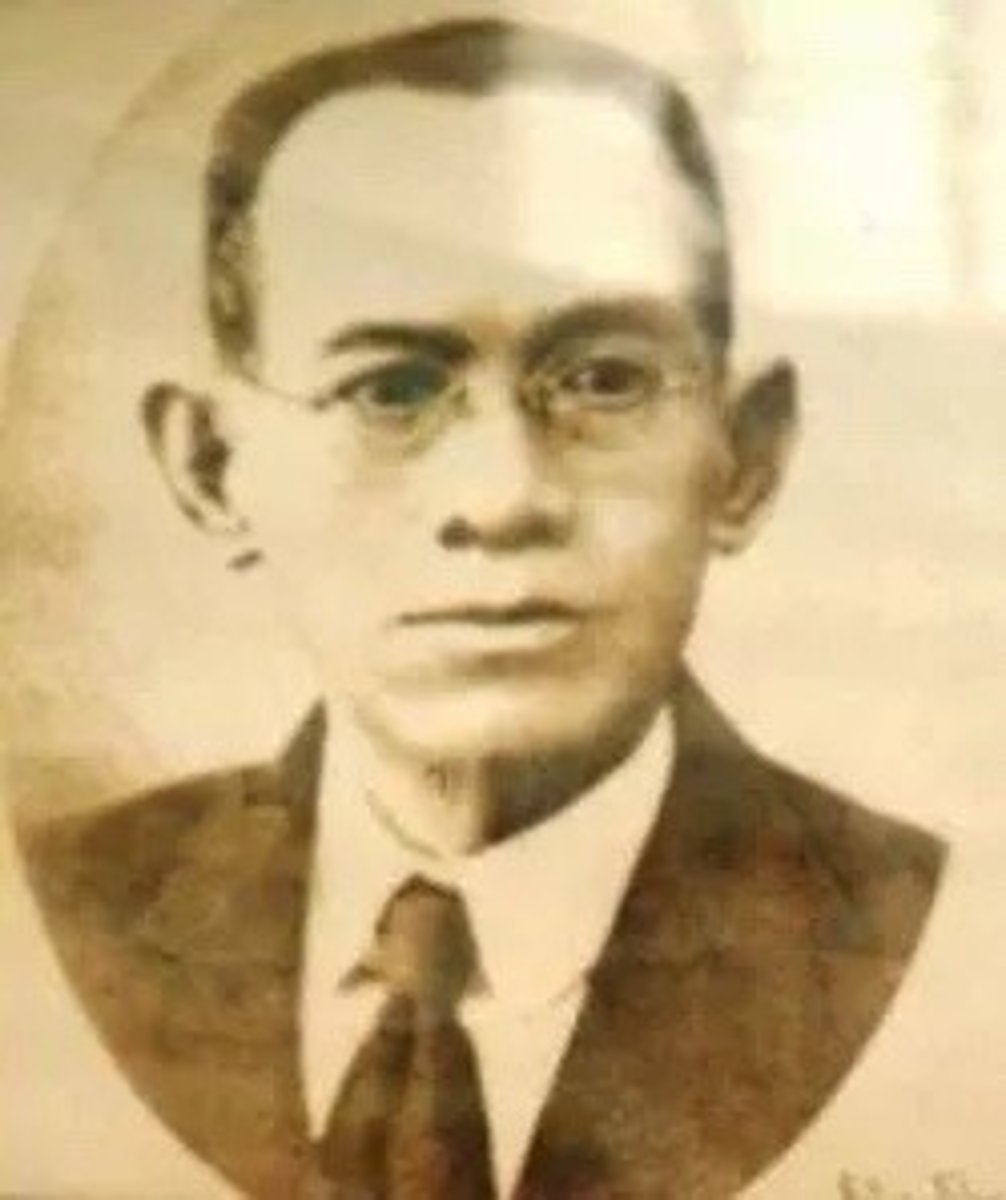
National Coat-of-Arms
Features azure and gules with sun and stars.

Great Seal of the Philippines
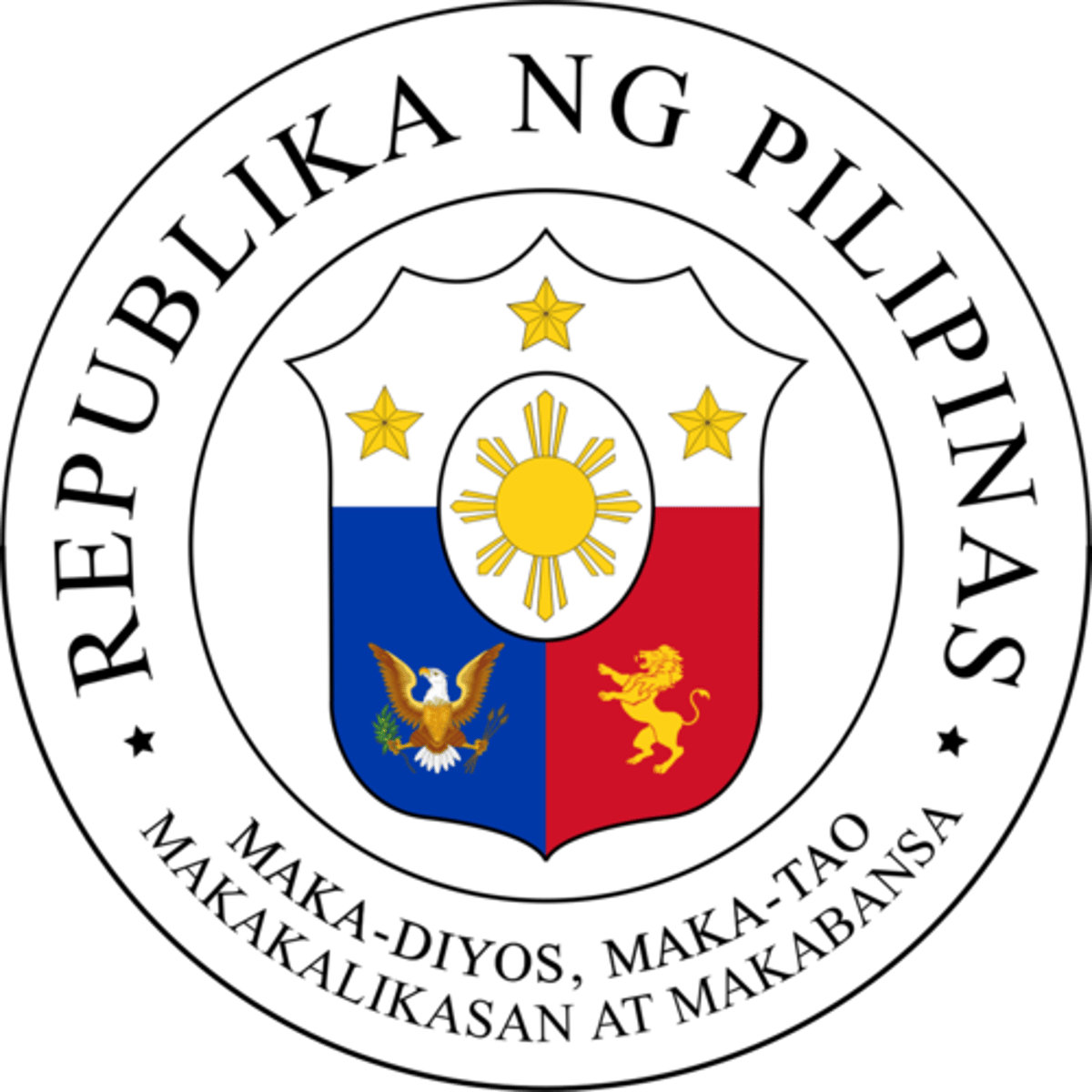
Length of National Flag and Flagpole
The flagpole must not be of equal height or higher than the Independence Flagpole at the Rizal Park, Manila.
The Philippine National Flagpole, also known as the Independence Flagpole
45.72 meters (150 ft)
Minimum length of the National Flag
1/4 of the height of the flagpole.
Maximum length of the National Flag
1/3 of the height of flagpole.
Nationalism
A strong feeling of pride in and devotion to one's country
Patriotism
A sense of pride in one's country.
Symbols and Meanings of the Philippine Flag
1. White equilateral triangle
2. Horizontal blue stripe
3. Horizontal red stripe
4. Eight-rayed golden sun
5. Three five-pointed stars
White equilateral triangle
Liberty, Equality, Fraternity.
Horizontal blue stripe
Peace, truth, and justice.
Horizontal red stripe
Patriotism and valor.
Eight-rayed golden sun
Represents unity, freedom, people's democracy, and sovereignty; each ray represents a province involved in the 1896 Philippine Revolution against Spain.
Three five-pointed stars
Represent Luzon, Visayas, and Mindanao.
Preamble
We, the sovereign Filipino people, imploring the aid of Almighty God, in order to build a just and humane society and establish a Government that shall embody our ideals and aspirations, promote the common good, conserve and develop our patrimony, and secure to ourselves and our posterity the blessings of independence and democracy under the rule of law and a regime of truth, justice, freedom, love, equality, and peace, do ordain and promulgate this Constitution.
ARTICLE I- National Territory
The national territory comprises the Philippine archipelago, with all the islands and waters embraced therein, and all other territories over which the Philippines has sovereignty or jurisdiction, consisting of its terrestrial, fluvial, and aerial domains, including its territorial sea, the seabed, the subsoil, the insular shelves, and other submarine areas. The waters around, between, and connecting the islands of the archipelago, regardless of their breadth and dimensions, form part of the internal waters of the Philippines.
ARTICLE II- Declaration of Principles and State Policies
SECTION 1. The Philippines is a democratic and republican State. Sovereignty resides in the people and all government authority emanates from them.
SECTION 2. The Philippines renounces war as an instrument of national policy, adopts the generally accepted principles of international law as part of the law of the land and adheres to the policy of peace, equality, justice, freedom, cooperation, and amity with all nations.
SECTION 3. Civilian authority is, at all times, supreme over the military. The Armed Forces of the Philippines is the protector of the people and the State. Its goal is to secure the sovereignty of the State and the integrity of the national territory.
SECTION 4. The prime duty of the Government is to serve and protect the people. The Government may call upon the people to defend the State and, in the fulfillment thereof, all citizens may be required, under conditions provided by law, to render personal military or civil service.
SECTION 5. The maintenance of peace and order, the protection of life, liberty, and property, and the promotion of the general welfare are essential for the enjoyment by all the people of the blessings of democracy.
SECTION 6. The separation of Church and State shall be inviolable.
ARTICLE XIV
Education, Science and Technology, Arts, Culture and Sports
ARTICLE XV- The Family
SECTION 1. The State recognizes the Filipino family as the foundation of the nation. Accordingly, it shall strengthen its solidarity and actively promote its total development.
SECTION 2. Marriage, as an inviolable social institution, is the foundation of the family and shall be protected by the State.
SECTION 3. The State shall defend:
(1) The right of spouses to found a family in accordance with their religious convictions and the demands of responsible parenthood;
(2) The right of children to assistance, including proper care and nutrition, and special protection from all forms of neglect, abuse, cruelty, exploitation, and other conditions prejudicial to their development;
(3) The right of the family to a family living wage and income; and
(4) The right of families or family associations to participate in the planning and implementation of policies and programs that affect them.
SECTION 4. The family has the duty to care for its elderly members but the State may also do so through just programs of social security.
ARTICLE XVI
General Provisions